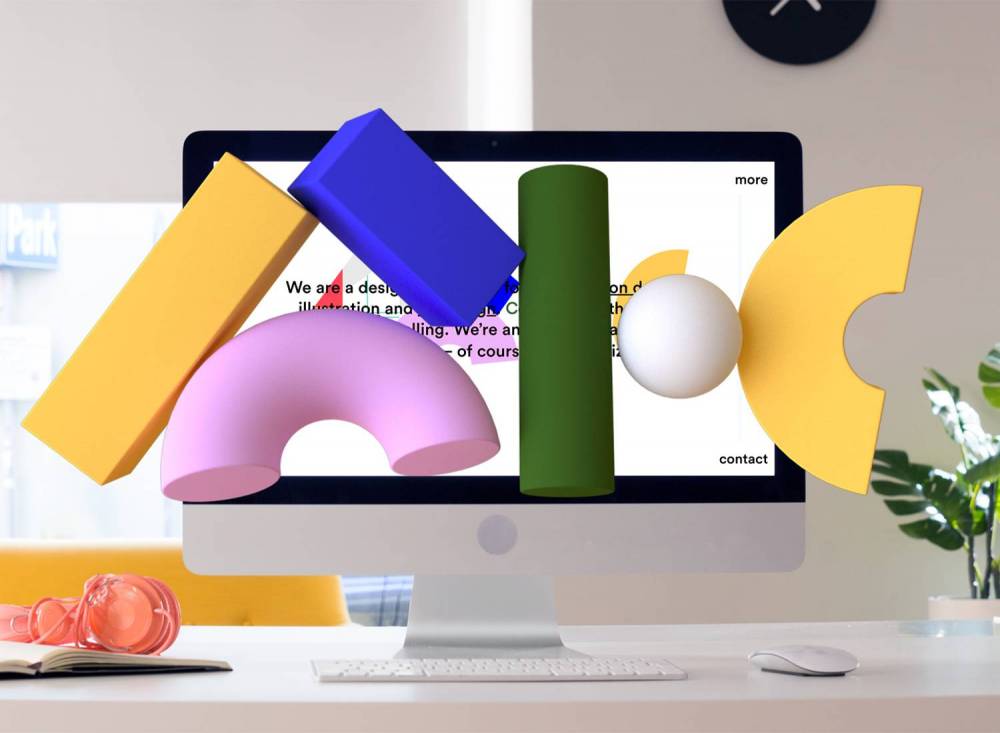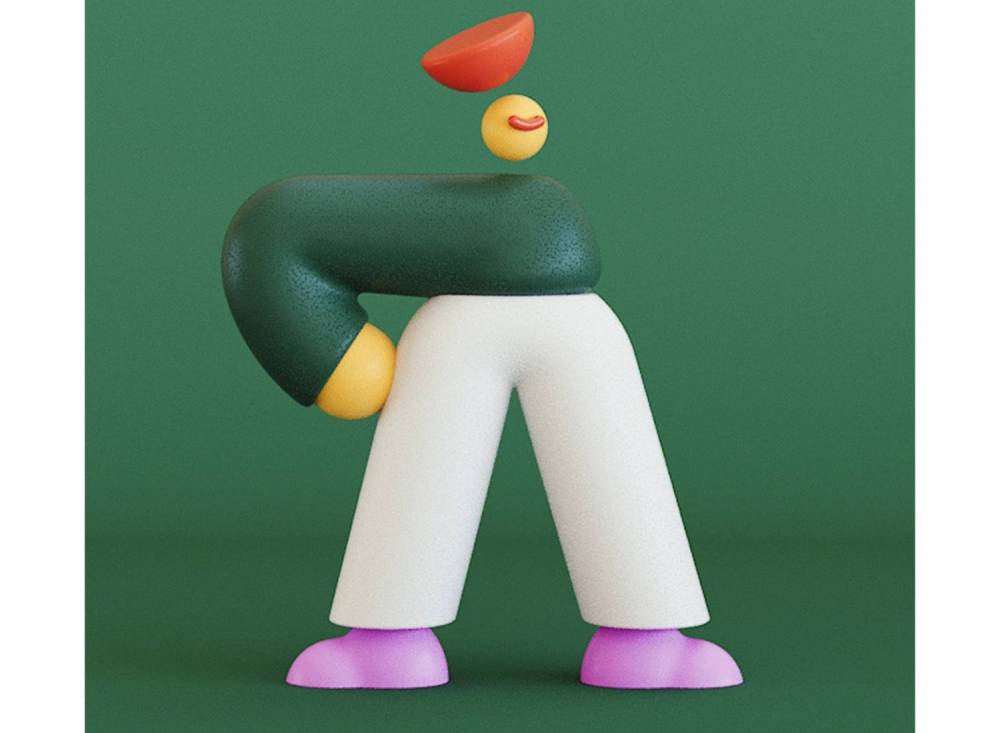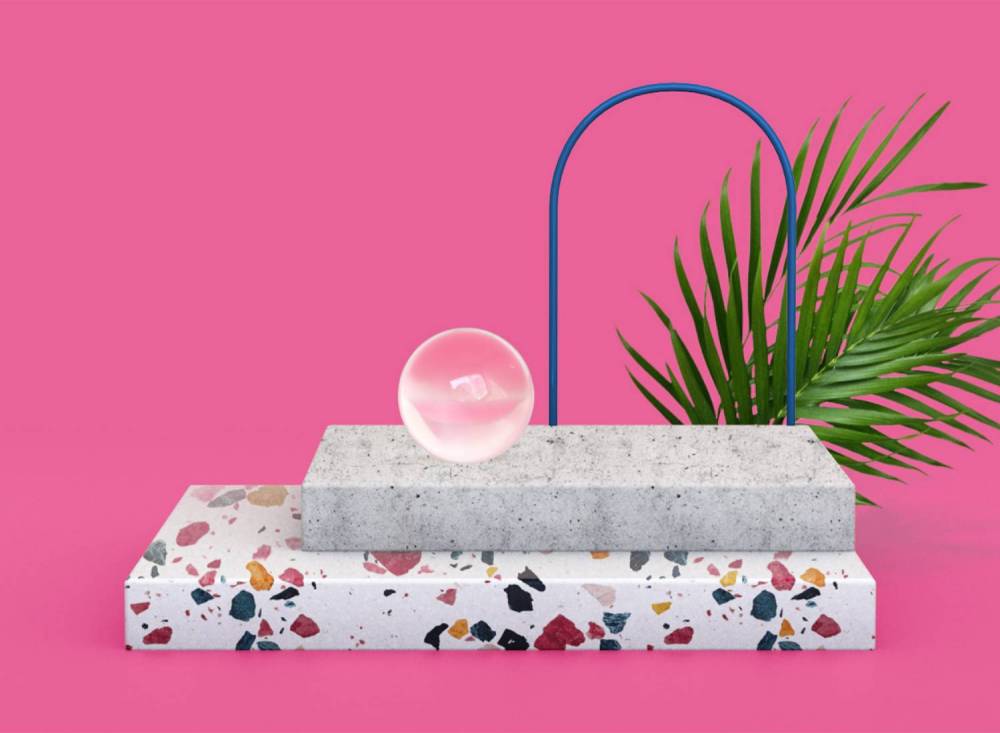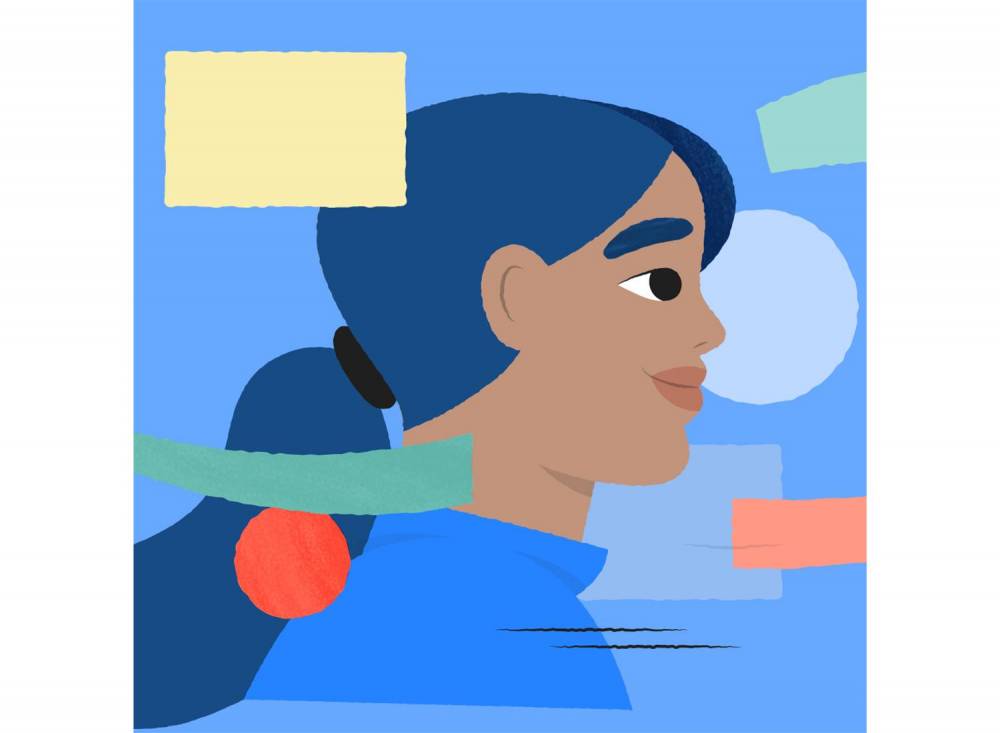Colorful, geometric & lots of personality: The genius behind design studio Illo
If you see playful yet minimalistic designs in popping colors that are fondly animated, chances are design studio Illo is behind it. The Italy-based collective was founded by Ilenia Notarangelo and Luca Gonnelli back in 2012 and since then has grown to a team of 15 people, all of them thriving on getting the best out of the combination of design and technology. Before their talk at Forward Festival Hamburg, we had a chat with Ilenia Notarangelo about what’s behind all those fun animation designs.
What does Illo stand for creatively?
Illo stands for concise, clear and colorful work, with animation breathing life and personality into our projects.
In what three words would you describe your aesthetics?
Colorful, minimal & geometric

When kicking off a big project, how do you start? Where do you find inspiration?
We usually start our creative process from a moodboard, a collection of outer references where we mix inspiration coming from the world of motion design, illustration, graphic design but also art, architecture and maybe some random-stuff-we-stumbled-on-during-our-last-travel too.
We try to have a maximum of 2 boards to set a clear direction. We usually collect a mix of stills and gifs on a shared presentation, so you’ve a limited space (and you need to make some choices) and it’s easier to work together.
During the process, it’s also very useful to go back and see the initial moodboard to be sure we are sticking to the set direction or in case we’re having a blank page moment during the design phase.
When creating, do you have a goal in mind, or does that come with the process?
As a studio, we mainly work as a team, so having a goal in mind is important to have everyone on the same page and following a consistent direction that can make our work beautiful and relevant. That said, crafting a video is also a lot of adding-and-removing-elements process – so we try to stay open to some changes as we have the opportunity to see the big picture of the project.
In a video or in an illustration system, every single piece should work together and make sense for the global result.

Can you tell us more about your workflow?
After the moodboard, we work on the script (when it’s a video project) and on some very ugly sketches for the storyboard, that let us validate and iterate ideas rapidly, still leaving us complete freedom in the design phase.
Then, we do styleframes to set the visual direction. At this point we merge the sketches and the styleframes, and we design all the boards to come up with an animatic with a draft VO and a first music proposal, to start having a sense of what the video will look like. And finally, our specialty: animation!
What tools are essential for it?
Most of the ideation part is done on Google shared documents, while for the design phase we mainly rely on Illustrator and After Effects for 2D animation.
For our 3D project, we use Cinema 4D and Octane as our render engine.
Before crafting stuff in 3D, we usually do an initial 2D illustration and animation for that shot so we can validate ideas more easily.

What was the core (creative) idea for the latest production you are creating with Cinema 4D?
3D is still a pretty new thing for our studio, but we are so fascinated by its possibilities. It’s amazing to see how we can turn our 2D style into something three dimensional, that still is completely in line with our aesthetics and design & animation approach.
For our latest project, we started from a very fun, sadly-rejected by the client, 2D illustration from a larger project and we tried to transform it in 3D.
While we are pretty used to using 3D for more abstract shapes, we wanted to put our more figurative 3D skills to the test, creating some geometrical flowers and some fun, exaggerated characters.

What technical challenges had to be mastered for the project?
Our natural artistic language is still 2D, so one of the main challenges has been starting from 2D and coming up with a three dimensional physicality that can work both for design and animation.
In our very visually-synthetic style, we tend to use abstraction, masks and continuous matching lines that really work well in 2D — but in 3D you can’t cheat with perspective views.
Another challenge for a studio so focused on color choices like ours is how 3D is not only about color, but also about textures and materials — so we had to develop the right sensibility to create something in line with our aesthetics.
Which tools or methods were used to master these challenges?
The first tool that we needed to master was Cinema 4D, actually!
Aside from me, creative directing the project (in the last 2 years I used C4D for some personal experimentations, to get used to this new language for the studio), there’s Matteo Ruffinengo, Motion Engineer, who took care of all the materials, lighting and character animation; he already had a pretty solid experience with more abstract-shapes based 3D animation in C4D, but was new to character animation, while Sofia Buti, Designer, started almost from scratch but achieved great results in modeling in a relatively short time frame – while still keeping her iconic illustrative style.
I think that, as a team, we still have a long way to go to master new challenges, but I’ve always seen technical challenges or limitations also as a way to spark creativity even more. On a more practical note, using Octane as a rendering engine was crucial to achieve great material and lighting results in a very short time.

Were there any “unforgettable moments“ with regard to this project?
I think that the “unforgettable moment” for each 3D project is when you set eyes on the very first high-quality render! Also, envisioning the opportunity to speak about our still tiny 3D production at Forward Festival is really, really exciting.
When are you confronted with boundaries of your work?
As a team, sometimes we model something and we are satisfied with the result, but afterwards we need to start back from scratch and change the modeling approach to be able to animate it properly, with an expressive style.
I guess that the next step for our 3D production will be thinking and sketching fast in 3D. On the other hand, I think that starting with a 2D mindset lets us be consistent with our colorful and simplistic aesthetics. So, we will see!
Your work is all digital. Do you sometimes use analogue tools to keep track of your ideas?
Sure, we mostly sketch with a pencil and paper, especially when you have to share quick ideas with your teammates.

What inspires you to keep on pushing further?
In an historical moment where new media and distribution channels are in a very flourishing moment, it’s very fascinating to see how our style can apply to different techniques, from 3D to AR or to video automation for TikTok, still being recognizable and consistent — and at the same time looking totally new thanks to the different contexts.
Also working and being the visual voice for industries that are making the future right now, from technology to sustainability, is what inspires us day by day.
Illo presented by Maxon is one of our key speakers at Forward Festival Hamburg – don’t miss out on their talk!